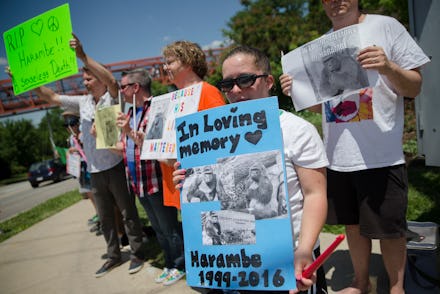The Cincinnati Zoo wants to kill Harambe all over again

In May, Harambe, a gorilla at the Cincinnati Zoo, was shot and killed in order to save a 4-year-old boy who fell into the animal's enclosure. The story dominated headlines for days, with public opinion divided on whether "lethal force" should have been used on Harambe, and whose fault the incident was — the boy's mother's, for supposedly not keeping a watchful eye on her son, or the zoo's, for responding poorly in an emergency situation.
As the outcry reached a fever pitch and Harambe — a member of an endangered species — turned into a veritable martyr, the internet responded the best way it knew how: with memes.
But now, after three months of this...
...and this...
... Cincinnati Zoo director Thane Maynard told the Associated Press on Monday she wishes the public would give it a rest.
"We are not amused by the memes, petitions and signs about Harambe," Maynard wrote to the AP in an email. "Our zoo family is still healing, and the constant mention of Harambe makes moving forward more difficult for us."
As the AP pointed out, what began as a seemingly harmless joke escalated to the level of racism a number of times, when Facebook and Twitter users compared Australian indigenous rugby player Adam Goodes and black actress Leslie Jones to the gorilla.
Still, most continue to use the meme solely for the purposes of irony, irreverence and the lolz.
According to Bowling Green State University professor Jeremy Wallach, who specializes in pop culture, the death of Harambe will always be fraught — joke fodder for some and tragic for others.
"There is a word we like to use in our discipline, in pop culture studies, and that is 'polysemic': has many meanings," Wallach told the AP. "Harambe definitely is that, a sign that possesses many different interpretations."